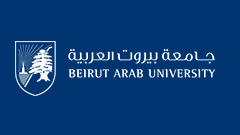TOWARDS URBAN BIODIVERSITY: SIMULATING DESIGN PARAMETERS FOR WILDLIFE-INCLUSIVE GREEN INFRASTRCUTURE
Keywords
Urban Biodiversity, Wildlife-inclusive, Green Infrastructure, Shouf Biosphere Reserve
Disciplines
Animal Studies | Biodiversity | Environmental Design | Environmental Studies | Urban Studies and Planning
Abstract
As of 2021, more than half of the global population resides in urban areas. This resulted in an overwhelming footprint affecting species habitat areas leading to biodiversity loss. By definition, urban biodiversity is the diversity of living things within the urban realm. By providing chances for habitat as part of new developments, preserving on-site habitats, and attempting to connect with the local ecosystems, we can help promote biodiversity. Green infrastructure (GI), which includes all semi-natural areas in the urban context, can serve as a vessel for biodiversity. Therefore, the problem can be defined by the urban footprint that expands on the expense of native habitats, leading directly to biodiversity loss and impacts on human health, and indirectly affecting livelihoods. Moreover, often times the approaches are sometimes limited to ‘green’ in more aesthetic ways than operational. It is also important to seek socio-ecological frameworks to promote adequate interaction of urban communities with wildlife. Therefore, this research aims to simulate design parameters for wildlife-inclusive green infrastructure to contribute to the creation of built environments that support urban biodiversity. If equipped with a socio-ecological framework, beyond ‘green’ results can be yielded. Using a case study method, the author will provide an application of the extracted parameters from the literature on a chosen geography with reference of ecological data provided of the ‘Shouf Biosphere Reserve’ of Lebanon to provide supported insight into wildlife-inclusive green infrastructure examples. In the context of this literature, we need to examine the manifestation of those concepts mainly on an operative level with respect to ecology. Also, it is required to examine the socio-cultural aspects of this interaction through architecture. In conclusion, as presented in the case study of SBR, the additional ecological and socio-cultural layers in planning of green infrastructure, can yield beyond ‘green’ results as a whole system designed with both the local ecosystems and urban inhabitants in mind within the landscape. Each geography will display its endemic version of ‘green’ as well. Variations of wildlife species can become parameters that also help shape our built environments. ‘Our’ built environment exists in the larger scope of the natural setting. Nature-based solutions can be implemented for our urban problems. A geographically specific GI network can provide alternative infrastructure for local ecosystems. Therefore, with increasing repercussions of urban expansion on habitat areas, immediate action plans must be formulated to stop species loss.
Author ORCID Identifier
Alisa Abdulghany-https://orcid.org/0009-0004-2864-9730
Baher Farahat-https://orcid.org/0009-0003-9295-9939
Recommended Citation
Abdulghany, Alisa and Farahat, Baher
(2023)
"TOWARDS URBAN BIODIVERSITY: SIMULATING DESIGN PARAMETERS FOR WILDLIFE-INCLUSIVE GREEN INFRASTRCUTURE,"
BAU Journal - Creative Sustainable Development: Vol. 4:
Iss.
2, Article 5.
DOI: https://doi.org/10.54729/2789-8334.1104
ISSN
2789-8334
Included in
Animal Studies Commons, Biodiversity Commons, Environmental Design Commons, Environmental Studies Commons, Urban Studies and Planning Commons

